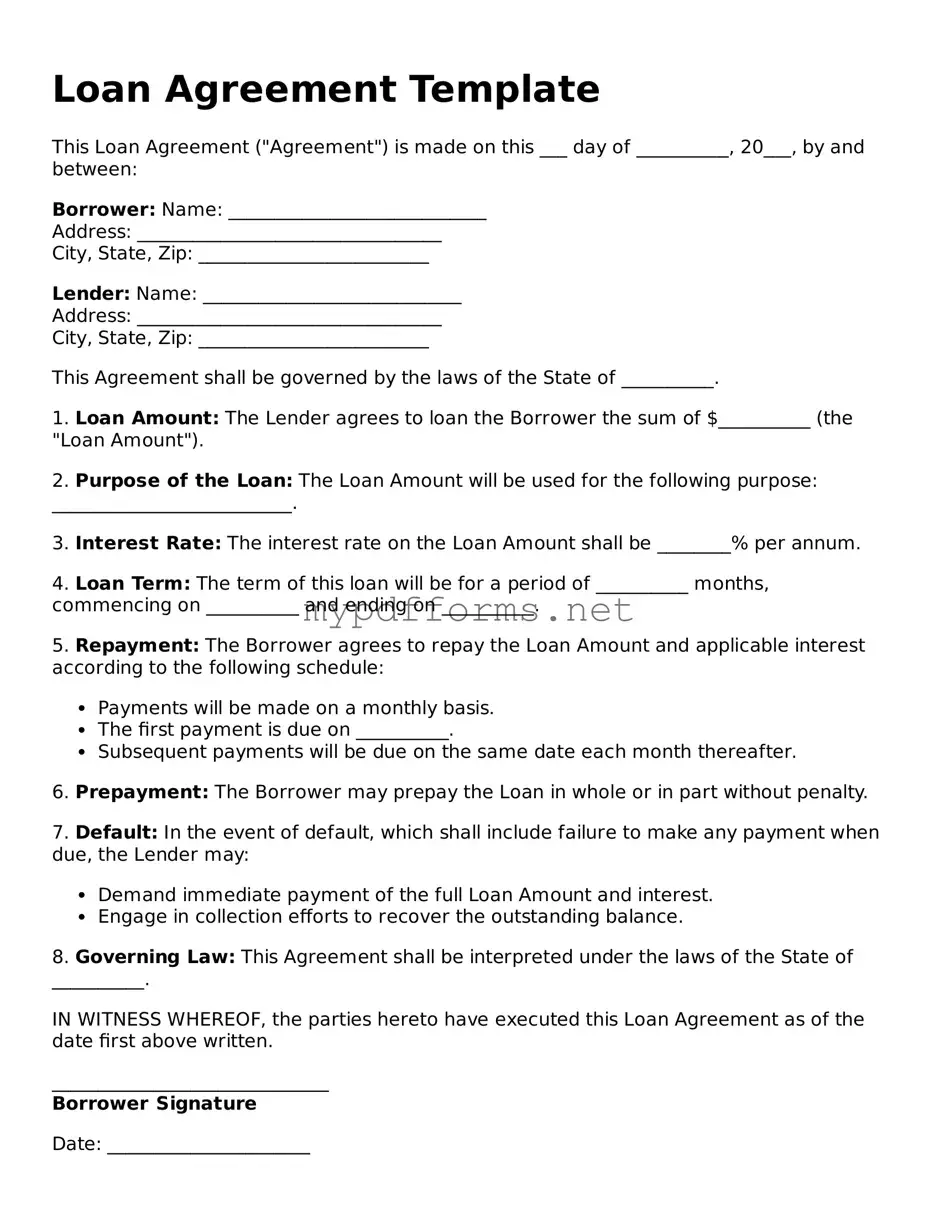The Loan Agreement form shares similarities with a Promissory Note. Both documents outline the terms of a loan, including the amount borrowed, interest rates, and repayment schedules. A Promissory Note is typically a simpler document that focuses on the borrower's promise to repay the loan, while a Loan Agreement may provide more detailed terms and conditions. Each document serves as a binding contract, ensuring that both parties understand their obligations and rights regarding the loan transaction.
Another document akin to the Loan Agreement is the Mortgage Agreement. While a Loan Agreement can pertain to various types of loans, a Mortgage Agreement specifically deals with real estate loans. It outlines the borrower's commitment to repay the loan and includes details about the property being financed. Both documents protect the lender's interests, but the Mortgage Agreement adds a layer of security by using the property as collateral, which is not always the case in standard Loan Agreements.
A Credit Agreement is also similar to a Loan Agreement, as both outline the terms under which a borrower can access funds. However, a Credit Agreement typically involves a revolving line of credit, allowing the borrower to withdraw funds up to a specified limit as needed. In contrast, a Loan Agreement usually involves a lump sum that is repaid over time. Both documents require clear terms regarding interest rates, repayment schedules, and any fees associated with borrowing.
For those looking to manage their financial affairs effectively, the necessary details on the General Power of Attorney requirements can provide essential guidance on creating such a powerful legal document.
The Lease Agreement can be compared to a Loan Agreement in that both documents involve the exchange of value over time. A Lease Agreement outlines the terms under which a lessee can use property owned by a lessor in exchange for rental payments. Similar to a Loan Agreement, it specifies payment amounts, duration, and responsibilities of both parties. While one involves borrowing money and the other involves renting property, both serve to formalize an agreement and protect the rights of the involved parties.
Lastly, a Service Agreement has parallels with a Loan Agreement in that both documents define the terms of an arrangement between parties. A Service Agreement details the expectations, deliverables, and payment terms for services rendered. While a Loan Agreement focuses on the borrowing and repayment of funds, both documents require clear communication of obligations and can include terms for default or breach of contract. Each serves to ensure that both parties are aware of their responsibilities and the consequences of not fulfilling them.
